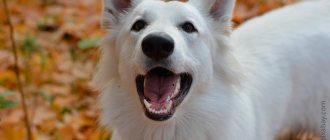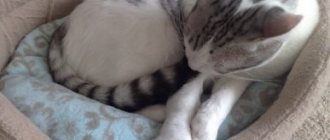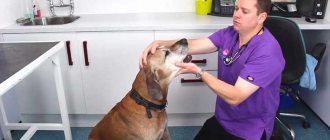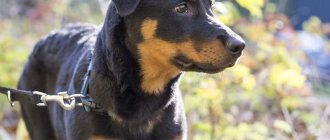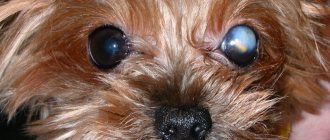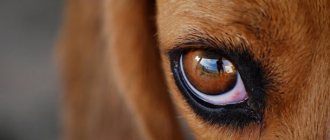Sneezing can be normal in dogs, but in certain situations you may wonder if excessive sneezing is a cause for concern.
There are many reasons why dogs sneeze, so it's important to differentiate between playful or social dog sneezing and an indicator of a more serious underlying health condition.
Here are some common reasons why your dog might be sneezing, as well as other signs to look out for, what to do if your dog won't stop sneezing, and when to take your dog to the vet.
Why do dogs sneeze?
This list will help you narrow down the possible causes of your dog's sneezing episode:
Allergies
If your dog is sneezing, it can sometimes be a sign of an allergy. You may notice sneezing in addition to other allergy signs such as watery eyes, scratching, and licking of the fur due to itching.
Playful sneezing
Dogs often sneeze while playing as a sign of happiness. This also alerts the other dog that he is exhibiting play behavior. If you see your dog sneezing during a date and there are no other symptoms, there is likely nothing to worry about!
Reverse sneezing
Reverse sneezing in dogs is an interesting phenomenon that usually occurs in response to excitement, irritation, or inflammation. Dogs will take sudden, repeated breaths through their nose, similar to a beep.
They seem to have trouble breathing when dogs sneeze back. Although it may seem dramatic, petting your dog and calming him down usually resolves the behavior.
Airborne irritants
Some dogs may be sensitive to irritants such as pollen or dust, causing them to sneeze.
Small particles can become lodged in your dog's nasal passages or throat, causing sneezing due to irritation.
Other common irritants include scented candles, perfumes, air fresheners, smoke or cleaning products.
Foreign body
Sometimes foreign material gets stuck in a dog's nasal passages, causing severe irritation. Examples of such material include grass stems, foxtail, or sticks.
These items are very irritating, so in this case the dog will constantly sneeze and experience discomfort.
Nasal infection
Upper respiratory infections can cause dogs to sneeze. They can be fungal or bacterial in nature, and sometimes even come from an infected tooth root.
If your dog has an infection, you will usually see additional symptoms such as bloody or mucous discharge and a lack of appetite.
Nasal mites
Nasal mites are small insects that can cause severe nasal irritation in dogs. Dogs often get them when they dig or rub their noses in dirt. Due to the irritation and inflammation caused by these bugs, you will usually see bloody or thick discharge from your dog's nose in addition to frequent sneezing.
Nasal tumor
In older dogs (usually over 7 years of age), nasal tumors are a possible cause of sneezing. Symptoms are usually characterized by increased sneezing over time, and tumors may cause bleeding on one side of the nose.
Dog Breeds Prone to Sneezing
Brachycephalic or flat-faced dogs are more prone to sneezing due to anatomical compression of their nasal passages. The most common brachycephalic breeds with a tendency to pant or sneeze are pugs, Boston terriers, and English bulldogs.
Sneezes and snorts
Snorting is a sign that your pet is trying to clear his sinuses . If the lobe is clean and there is no discharge, then the cause lies in a foreign object. In this case, a prolonged act of sneezing and other symptoms are noted:
- Anxiety (the dog rubs its nose with its paws);
- Difficulty breathing (the dog cannot draw in air and snorts);
- Coughing attacks are possible when the posterior connective tissue is blocked.
If your dog is sneezing heavily for several days, there is a reason to see a veterinarian. A single or double sneeze should not cause panic among owners.
The veterinarian will surgically remove the object. After which antiseptics (Anadin) and a course of antibiotics (Polydex) will be prescribed. It is important to show your pet to a doctor after treatment to conduct a final rhinoscopy to confirm the fact of recovery.
Another problem that causes a similar reaction is severe bruising. In this case, pain will occur when you press the spout. Injury can be caused by a sharp branch, a cat, or even a bee sting.
All cuts, injections or bruises of the lobe are very painful, because important receptors are located on the tailed nose. The owner can treat the edges with a solution of sodium permanganate or brilliant green, and seal it with a band-aid there so as not to close the nostrils.
Dog sneezing with other symptoms
What to do if your dog not only sneezes, but also has other symptoms? Here are some of the most common symptoms and what they mean.
Dog sneezes blood
Sneezing blood is a sign that something more serious is going on with your dog's nasal passages. Possible causes include foreign bodies, nasal tumors, and bacterial or fungal infections.
The dog sneezes and coughs
If your canine companion is sneezing and coughing at the same time, it could be a sign of a more serious condition. Possible causes of these symptoms include severe bacterial or fungal infections, kennel cough, canine influenza, or respiratory parasites.
The dog sneezes and wheezes
If your dog is wheezing in addition to sneezing, this may indicate a problem with your dog's lungs that requires further investigation. Wheezing can be caused by asthma or other respiratory conditions.
Can you help yourself?
What to do if your dog often sneezes and snorts depends on the cause of the illness and the severity of the condition. Without visiting a doctor, you can manage on your own if you have a mild cold or a foreign body.
To help your pet recover from a cold, take care of its comfort. Keep the patient warm, remembering to regularly ventilate the room. Limit physical activity and walking time. Give more fluids, including rosehip infusions, and change your diet in favor of easily digestible foods. If there are no complications, the existing symptoms will go away on their own in a couple of days.
If you suspect an object is stuck, calm your pet and carefully examine his nostrils. If the location of the stuck blade of grass allows it to be removed without harming the animal, pull it out using clean fingers or tweezers treated with an antiseptic. If it is deep or has sharp edges, it is best to consult a veterinarian.
When to take sneezing dogs to the vet
Accidental sneezing in dogs does not usually require a visit to the veterinarian. However, in some cases, a dog sneezing requires a visit to the veterinarian to find out what's wrong. Here are a few times when you should contact your veterinarian:
- If you see signs of thick nasal discharge/blood, nasal swelling, lethargy, high fever, or decreased appetite, take your dog to your local veterinarian for an examination as soon as possible.
- Frequent sneezing in dogs without a clear cause may require further testing.
- If your dog is experiencing severe signs of allergies (itching, licking, scratching) in addition to sneezing, make an appointment for further care.
Sneezes and coughs
Sneezing and coughing attacks in dogs look frightening, as if the animal is choking, convulsively gasping for air, and jerking its head. For an unprepared owner, such a picture will cause horror and panic, but there is no need to worry. Most likely, the pet has caught a cold.
His only symptom may be occasional sneezing or frequent coughing. But sometimes the disease takes on a different form:
- Heat;
- Chills;
- Lack of appetite;
- Lethargy.
In this case, the owner can independently cope with the problem:
- With children's "Pinosol", drop 1-2 drops into each nostril 3 times a day.
- When crusts appear, hydrogen peroxide diluted with water is dripped (1-2 drops each).
- Cough is treated with Pertussin children's syrup (no more than 1-2 teaspoons per day), Glyceram or Mucaltin.
If the cold is caused by hypothermia, then you need to take care of the warmth of the room in which the pet is located. It is better to put the heating pad in the sunbed for a while. From now on, you need to dress your dog in protective warm overalls and boots. There should be no drafts or temperature changes in the house due to air conditioning.
Is long-term hiccups dangerous in dogs?
If your dog hiccups frequently, he needs to be seen by a veterinarian.
Perhaps the cause of this symptom is:
- problem in the digestive system (improper unbalanced diet, worms);
- respiratory impairment (shortness of breath, cough, snoring);
- diseases of the central nervous system after infections;
- entry of a foreign body into the stomach.
Hiccups that continue for an hour may indicate an impending heart attack or stroke in your dog.
Apart from discomfort for the dog, hiccups as an independent phenomenon do not pose any threat. But the reasons that caused it, especially when it comes to pet diseases, must be eliminated. This requires consultation with a veterinarian, diagnosis and treatment of the root cause of hiccups.
Hiccups are a natural reaction of the body, and most often go away without any measures.
Diagnostics, therapy
Signs that indicate how to understand that a dog has a runny nose help the owner conduct the first examination. You need to take a flashlight to carefully examine the condition of the mucous membranes - the nature of the discharge, the degree of inflammation. Then the pet should be examined by a veterinarian, only he can make a diagnosis.
Then another question arises: the dog has a runny nose and is sneezing, how to treat it? The veterinarian starts from the cause of rhinitis. This helps to correctly prescribe treatment procedures.
Options:
- allergic response - antihistamines;
- pathological formation - surgical excision;
- foreign bodies - careful removal;
- infections – antibacterial or antiviral drugs;
- colds - drops, warming and rinsing.
The veterinarian decides, having discovered a runny nose in a dog, how to treat it and how to eliminate the root cause. This cannot be done on your own, since rhinitis can manifest itself as a symptom of a more serious illness or condition that threatens the animal’s life. A doctor's examination is required!
Reverse sneeze syndrome
A condition in which a dog convulsively sucks in air is called reverse sneezing. The act of sneezing involves sharply exhaling air through the nose. With reverse sneezing, the opposite process occurs. These convulsive breathing movements are explained by the fact that part of the elongated soft palate is sucked into the windpipe when inhaling, and thus the dog tries to clear the airways. A tight collar or a strong-smelling chemical can cause reverse sneezing. Dogs of small breeds with a small trachea and a short muzzle (brachycephalic) are especially susceptible to this disorder.
Similar movements appear if the dog is choking and reflexively tries to push the foreign body out of the windpipe. In most cases, this condition occurs in healthy dogs, but sometimes it may indicate the presence of worm larvae or polyps in the windpipe. So, if reverse sneezing occurs, it is recommended that your pet be examined by an experienced veterinarian.
Sneezing is a physiological process that allows you to get rid of foreign particles or microorganisms that irritate the nasopharynx area. But, at the same time, very often sneezing is a symptom of serious diseases of the respiratory system, the consequences of which can be serious. Therefore, if there is any suspicion of pathology, it is recommended to undergo a diagnostic examination at a veterinary center.
Allergy
Dogs explore the world with their noses; dogs have a highly developed sense of smell; in the modern world with a difficult environmental situation and an abundance of artificial odors, an allergic dog is not uncommon. What can trigger allergies in a dog:
- Tobacco smoke, especially if the owners are non-smokers, and on the street (at the entrance) you passed a smoking person;
- Plant pollen. Possible seasonal allergies to a specific plant;
- Mold;
- Dust;
- Household chemicals that have a strong odor, and an allergy can occur, for example, to aftershave balm;
- An insect bite can have serious consequences, threatening the life of the pet;
- A flea collar that seems harmless;
- Food bowl;
- Certain foods.
Allergy symptoms vary: the dog constantly sneezes, skin itches, coughing, snot, and watery eyes. Breathing may be difficult, irritation appears on the skin, and in some cases, hair loss is noted.
Allergies in dogs are permanent and seasonal; if you notice that the symptoms are similar, go to the doctor. The doctor will prescribe an antiallergic drug for your pet.
Formation of polyps or tumors in the nose and nasopharynx
Neoplasms in the nasopharynx produce similar symptoms. The dog sneezes many times in a row, shakes its head, and there may be bloody discharge (sometimes mixed with pus). There is often difficulty in nasal breathing. The dog sniffles and breathes intensely. This means that oxygen starvation begins. In this case, the dog’s body needs urgent help.
Professional diagnosis of this condition can only be carried out in a veterinary clinic. Using radiography, the presence of benign or malignant neoplasms is determined, and its nature is determined by taking material for a biopsy. Treatment is predominantly surgical. If the neoplasm is malignant, the dog will need to undergo a course of chemotherapy or radiotherapy.
Treatments for canine colds
Pet owners should know how to treat a dog for a mild cold at home and understand that serious problems are a job for veterinarians with extensive experience.
It is strictly prohibited to use paracetamol, which is common in humans, on dogs and cats - this substance is deadly for them. It is advisable to obtain precise treatment recommendations from your veterinarian.
If your dog has a severe cough, you need to make sure that the air in the room is humid. You can also give cough syrup, for small breeds - in a child's dosage or as directed by a doctor.
A severe cold in a dog can be treated with antibiotics, which must be given by injection. If the animal resists, growls and tries to bite, give tablets in a piece of food. The doctor may also prescribe medications to reduce fever, painkillers and sedatives, and antihistamines. It is dangerous to use such medications on your own without consulting a veterinarian.
In case of fever, the animal must be well covered, provided with the quietest and warmest place, given plenty of warm drinks, light but high-calorie food. A gentle massage and a heating pad placed under the bed help.
If your condition worsens or additional symptoms appear, you should immediately go to the clinic or call a doctor at home.
Visiting a veterinary clinic and treatment
If your help does not have the desired effect, and the existing symptoms are complicated by fever, vomiting, diarrhea and other alarming symptoms, sign up for a diagnosis at a veterinary clinic. Further treatment will depend on the cause of your dog's sneezing:
- Allergy
. Antihistamines are used to relieve symptoms. If contact with the allergen cannot be eliminated or the source of the allergic reaction cannot be identified, then the pet may be prescribed glucocorticosteroids.
- Foreign body and trauma
. Stuck objects are removed by washing or using surgical instruments. The procedure is carried out under sedation, which eliminates trauma to the mucous membrane from sudden movements of a frightened four-legged patient. Treatment for injuries depends on their severity. In addition to healing ointments and anti-inflammatory drugs, stitches may be required.
- Infections
. Depending on the pathogen, your pet will be given antibiotics, antiviral or antifungal agents.
- Neoplasms
. Tumors often degenerate into malignant ones, and polyps are prone to recurrence even after removal. For this reason, existing formations are excised, and the condition of the animal after surgery is carefully monitored.
- Parasites
. Anthelmintics are used to combat helminths, and acaricidal drugs are used to combat ticks and fleas.
- Tracheal collapse
. Drug therapy rarely gives a positive result, so in most cases surgical intervention is resorted to.
- Heart pathologies
. Depending on the diagnosis, the animal is prescribed antitussives, diuretics, cardiotonics, vasopressors, ACE inhibitors, glucocorticosteroids or antibiotics.
Please note that infections and parasites are dangerous to other pets. Infected pets should be isolated in a separate room until they recover.
